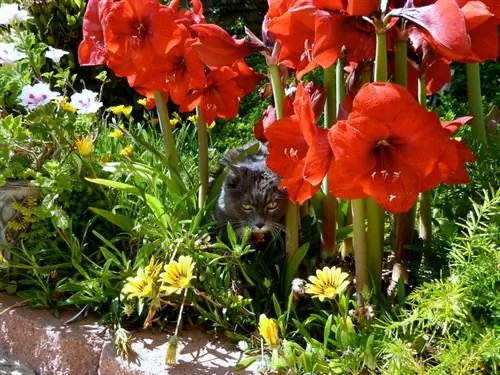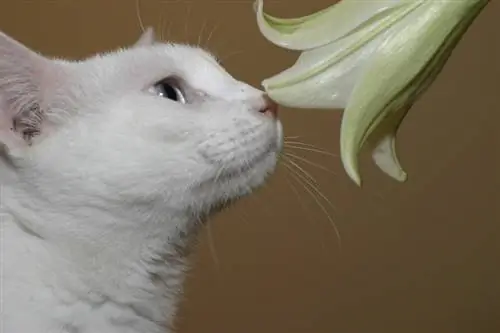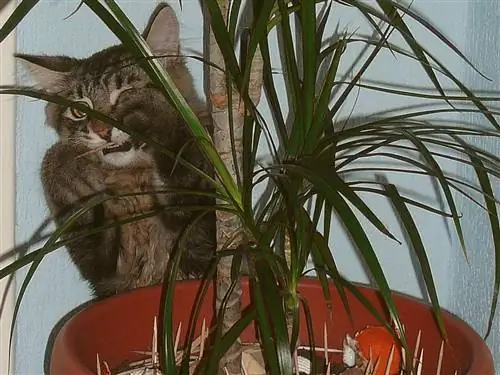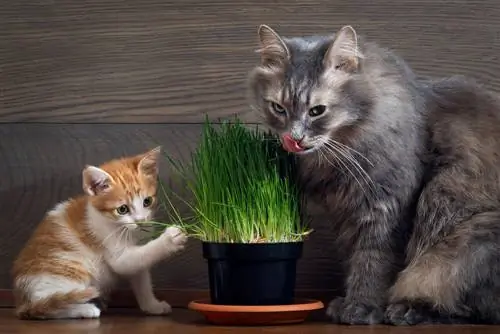- Author admin [email protected].
- Public 2023-12-16 16:46.
- Last modified 2025-06-01 06:02.
At Christmas time, the amaryllis (Hippeastrum) with its large, beautiful flowers can be found in many households. However, cat and other pet owners ask themselves: Can I have an amaryllis or is the plant poisonous to my cats?
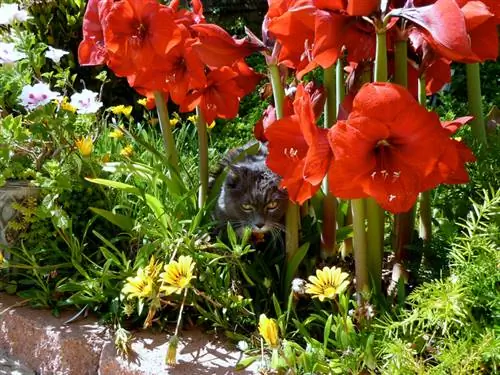
Is amaryllis poisonous to cats?
Amaryllis is potentially fatally poisonous to cats because it contains highly toxic alkaloids. The bulb in particular, but also leaves, flowers and seeds are dangerous. Poisoning manifests itself as nausea, vomiting, diarrhea, drowsiness and cramps.
How poisonous is amaryllis to cats?
In fact, amaryllis is potentially fatally poisonous to cats! Highly toxic alkaloids are particularly concentrated in the onions, but the toxic ingredients are also found in all other parts of the plant such as leaves, flowers and seeds.
By the way, this applies to all amaryllis and narcissus plants, which also include the following species, some of which are popular as garden plants:
- Belladonna lily (Amaryllis belladonna)
- Hook lily or garden amaryllis (Crinum x powellii)
- Snowdrop (Galanthus)
In addition, the toxicity of these plants applies not only to cats, but also to other pets - such as dogs - as well as to people.
Is amaryllis pollen poisonous to cats?
All parts of the amaryllis plant are highly toxic to cats, including the pollen of course. However, this is nowhere near as dangerous as the onion, flowers or leaves. The tuber in particular contains the toxic lycorine and other toxins. Therefore, cats, as well as other pets and people, are not allowed to try any parts of the plant under any circumstances. The onion in particular should not be eaten!
Caution is also advised with these pets, for whom the plant can also be dangerous:
- Dogs
- Rabbits and hares
- Hamster
- Guinea pig
- Birds
As a precaution, households with small children should also avoid growing amaryllis plants.
What are the symptoms of amaryllis poisoning?
As a result of poisoning with amaryllis, cats experience symptoms similar to those in humans:
- Nausea
- Vomiting
- Diarrhea
- increased salivation
- Dizziness up to fainting
- Cramps
- Paralysis
Depending on the amount of poison ingested and the concentration of the poison, the poisoning can damage the kidneys, lead to cardiac arrhythmias and even cardiac arrest. This danger exists especially in cats, as their smaller body size and lower weight means they require less poison for severe symptoms of poisoning.
What can you do if you are poisoned by amaryllis?
Do you suspect that your cat has nibbled on the amaryllis and therefore poisoned itself? Then you shouldn't even try any home remedies - in particular, you shouldn't give your cat any milk to drink! - but must go to the vet or animal clinic immediately. Describe your suspicions and tell the vet what plant it is. Your pet will probably have to stay there for a few days to be observed.
How can you prevent poisoning?
Unfortunately, you can only 100 percent prevent amaryllis poisoning by not cultivating the plant in a cat household. This also applies to amaryllis flowers used as cut flowers.
Alternatively, you should only place the flower in a location that your cat cannot reach. This could be a (locked) room, for example, but in this case you should always keep the doors closed.
Tip
Which houseplants are still poisonous to cats?
Many popular houseplants are highly toxic to pets. In addition to amaryllis, the following species are particularly dangerous for cats: cyclamen, calla lily, dieffenbachia, ivy, single leaf, kalanchoe, philodendron, schefflera, poinsettia and desert rose.

